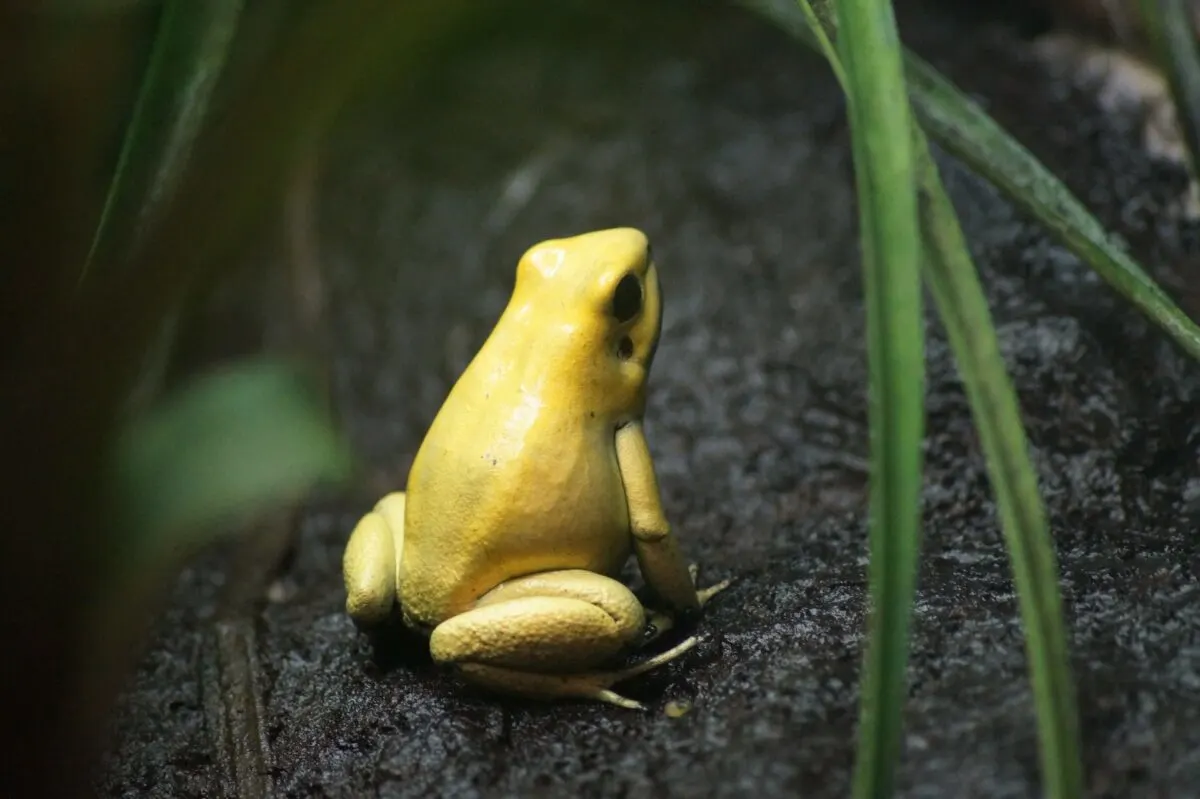Have you ever wondered what the most poisonous frog in the world is? This tiny amphibian proves that size doesn’t matter – you can be lethal even if you’re tiny.

Believe it or not, the most toxic frog on our planet is the Golden Poison Frog. This poison dart frog has a deadly skin toxin that can paralyze its prey and predators. Likwise, its brilliant colors are an evolutionary adaptation to ward off potential threats.
I find it hard to believe that such a tiny (and adorable, in it’s own and strange way) creature can be so dangerous. They say you have to kiss a bunch of frogs before you find your prince – hopefully before you kiss this one!
In this article, we’ll examine these incredible creatures: their habitats, diets, defense mechanisms, life cycles, and more. So if you’ve ever wanted to learn about how one of Mother Nature’s deadliest inhabitants operates, this is it!
Introducing the Most Poisonous Frog in the World
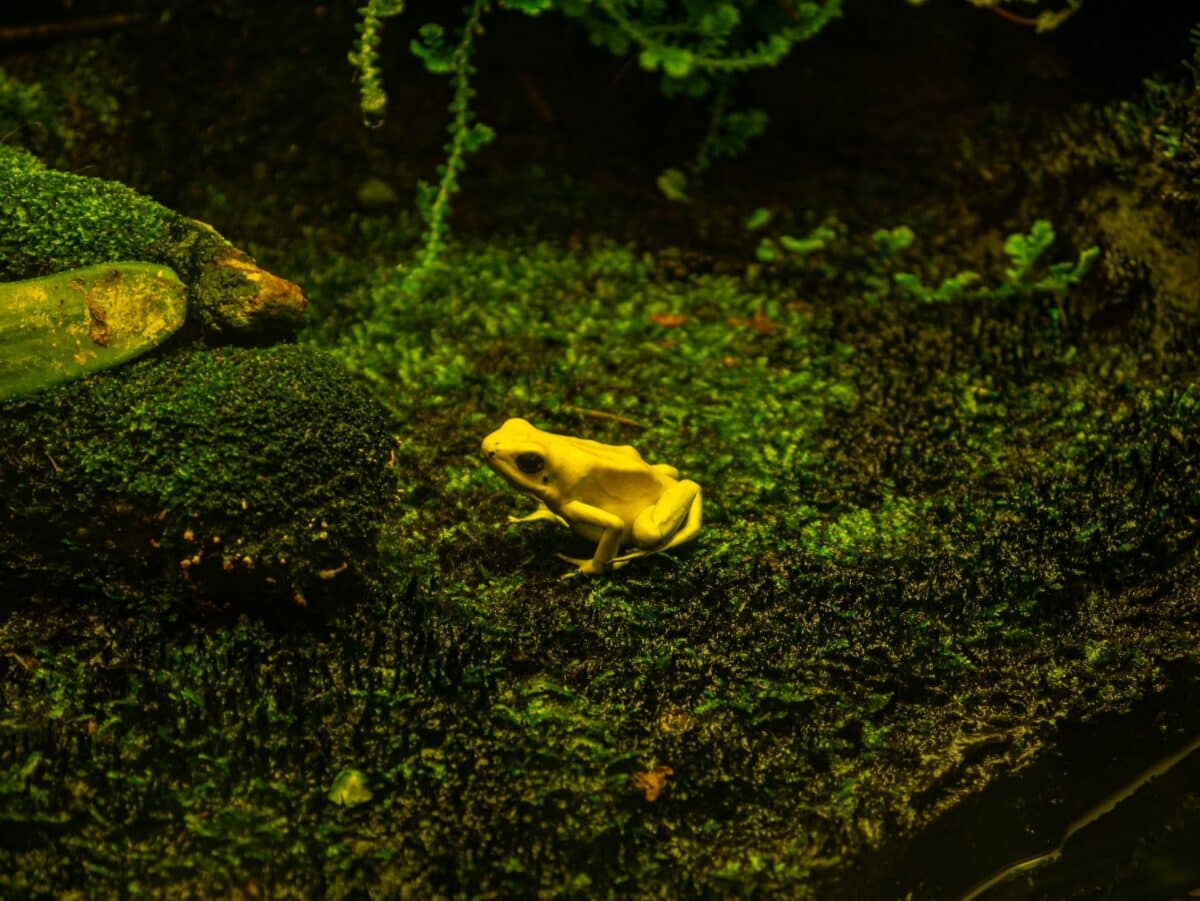
The world is home to many dangerous creatures, but few are as deadly as the Golden Poison Frog. This small but mighty amphibian packs a powerful punch with venom strong enough to kill ten grown men. It resides in the rainforests of Colombia. This bright yellow frog may be easy to spot – but should be avoided at all costs!
While its toxicity is certainly alarming, the Golden Poison Frog has nonetheless captured the attention and fascination of scientists and researchers. It is believed that studying this frog’s potent venom could hold the key to critical medical advancements. Despite its deadly reputation, the Golden Poison Frog is a fascinating and essential addition to the natural world.
Physical Characteristics of the Golden Poison Frog
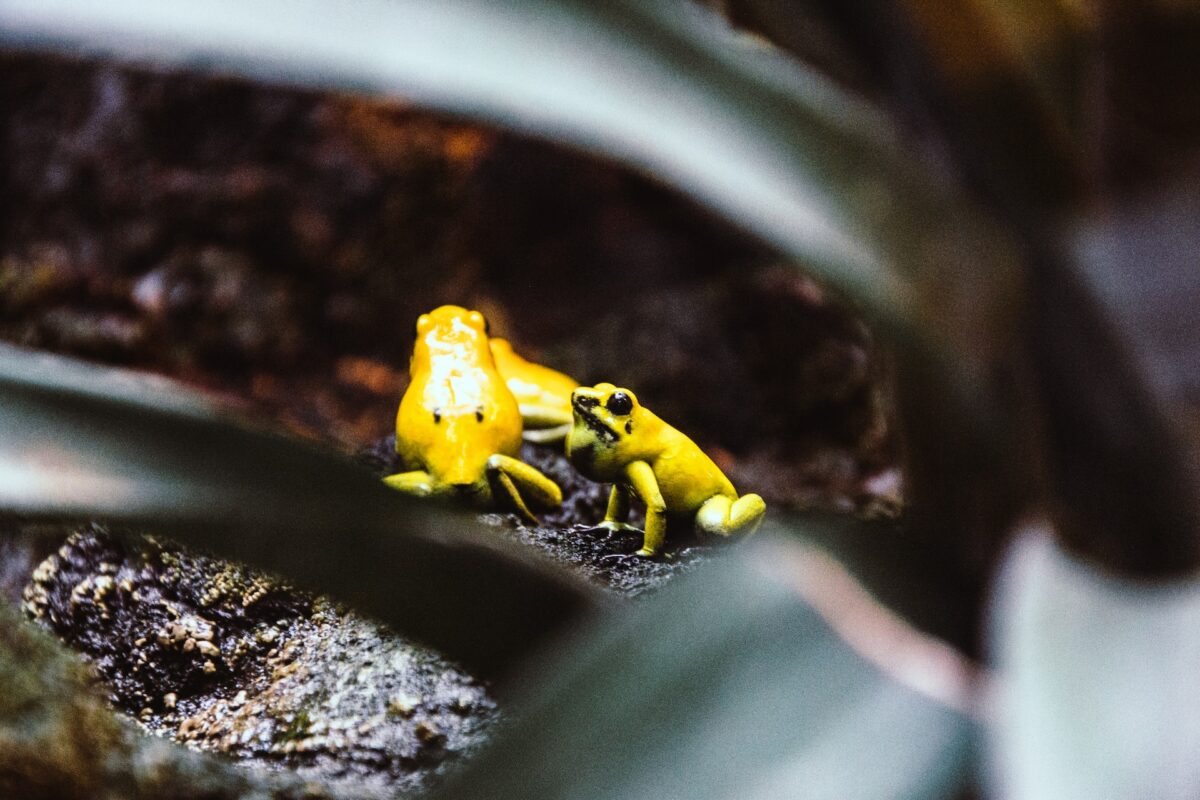
The Golden Poison Frog is one of the most amazing amphibians in the world, known for its bright yellow coloration and striking pattern. Moreover, these frogs are relatively small, growing to just two inches in length. They have webbed feet that allow them to move quickly through their rainforest habitat.
But what’s most intriguing about them is, of course, their toxicity. Despite their small size, they are one of the most venomous creatures on the planet. The strong poison that is secreted from their skin can be life-threatening for humans and other predators. These frogs are fascinating but crucial to maintaining biodiversity since they play a significant role in their ecology as predators and prey.
Habitat, Diet, and Behavior of the Golden Poison Frog
The golden poison frog, also known as the golden dart frog, is a fascinating creature with a vibrant appearance and unique characteristics. Found in the rainforests of Colombia, this frog has a bright golden-yellow coloration, which is a warning sign of its potent poison.
Despite its small size, the golden poison frog has a varied diet and is known to feed on insects, spiders, and other small invertebrates.
This species is also notable for its social behavior, as they form very close family units and actively communicate with each other using a range of vocalizations and body language.
Overall, the golden poison frog is a prime example of how small creatures can have a significant and dynamic impact on their ecosystems.
Benefits and Dangers of Keeping a Pet Golden Poison Frog
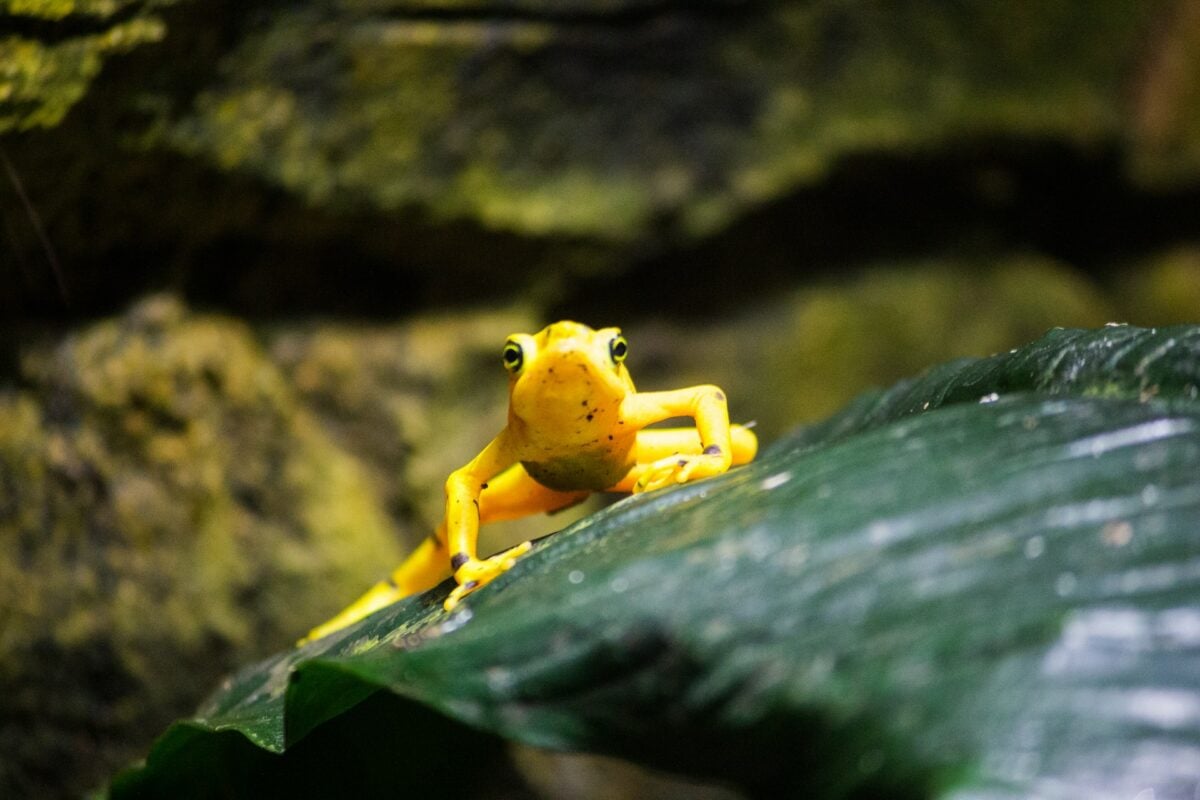
Golden Poison Frogs are fascinating creatures that offer a unique pet-owning experience. However, before deciding to keep one as a pet, it is essential to understand the benefits and dangers involved.
On the positive side, these frogs are visually stunning with their bright yellow and black coloring, and they can live for up to 15 years in captivity.
Additionally, they may help to control insect populations in your home.
However, owners must know the potential dangers of keeping a Golden Poison Frog. These frogs produce a potent toxin that they use for self-defense and can be fatal if ingested or if it enters the bloodstream. Therefore, owners must take great care when handling these pets to prevent accidental exposure to the toxin.
Overall, while keeping a Golden Poison Frog can be a rewarding experience, owners need to fully educate themselves on the potential risks involved.
Conservation Status
The Golden Poison Frog, also known as the Phyllobates terribilis, is a highly toxic amphibian native to Colombia’s Pacific coast. You might think that the most poisonous frog in the world would have nothing to worry about regarding its conservation status, but unfortunately, that is not the case.
Despite its toxicity, the Golden Poison Frog has become endangered due to habitat loss and fragmentation, as well as illegal poaching for the pet trade. Efforts are being made to protect and conserve this fascinating species, but it remains one of the most threatened frogs in the world.
With its bright yellow skin and unique behaviors, the Golden Poison Frog is a remarkable creature that deserves our protection to ensure their survival for future generations.
How to Help Protect the Golden Poison Frogs
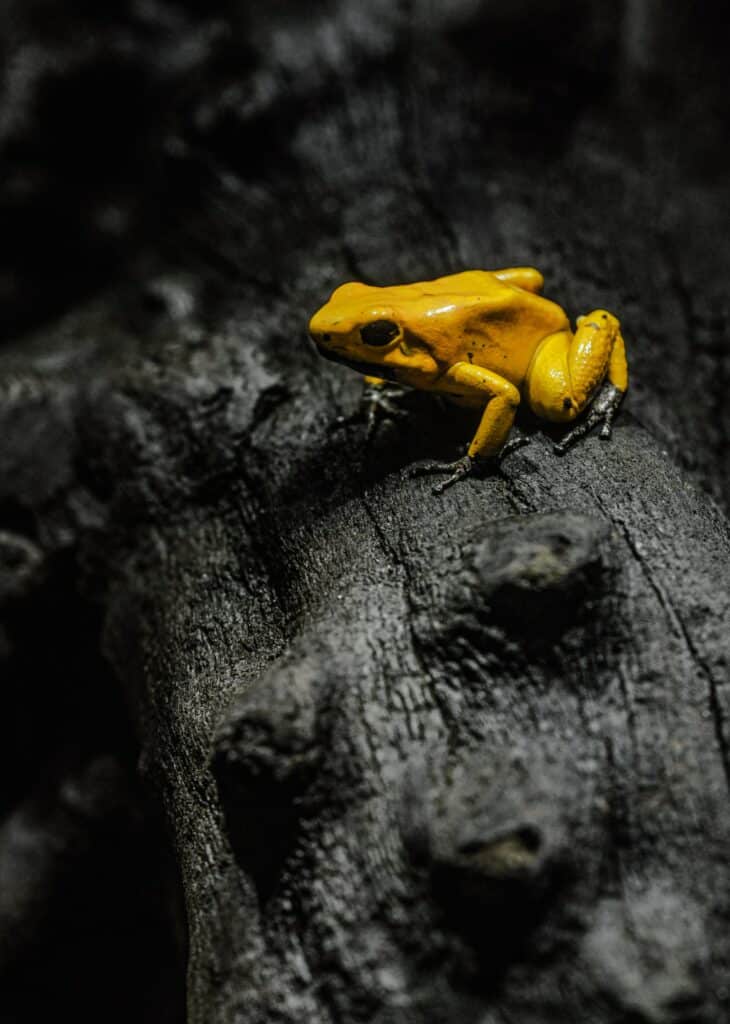
The Golden Poison Frog is a magnificent creature inhabiting Colombia’s rainforests. Unfortunately, these frogs are now critically endangered due to the loss of their natural habitat and illegal hunting. But there are ways we can help protect these little creatures and ensure they don’t disappear from our planet forever.
Supporting conservation efforts in the areas where the frogs live is one way of supporting their cause. Encouraging responsible tourism that doesn’t disturb their natural environment and spreading awareness about these fantastic creatures are also effective ways of protecting the Golden Poison Frogs in their natural habitat.
Let’s work together to ensure these magnificent amphibians continue to thrive in the wild.
Frequently Asked Questions
The Golden Poison Frog is native to the rainforests along the Pacific coast of Colombia. It is typically found near streams and rivers.
Yes, the Golden Poison Frog’s poison can be lethal to humans. While the frog itself is small, its poison is potent enough to kill up to 10 humans.
The Golden Toxic Frogs produce poison as a defense mechanism that helps keep them safe from predators in the wild. Potential predators are warned by the vivid color of their skin that it is hazardous and should not be eaten.
The Golden Poison Frog owns an critical endangered status, as per the International Union for Conservation of Nature (IUCN). Its dwindling population is primarily attributed to habitat loss from deforestation, pollution, and the illicit pet trade. While ongoing conservation initiatives aim to safeguard this remarkable amphibian from extinction, there remains a need to increase awareness about its plight.
The Final Word
| Key Points |
|---|
| This small but mighty amphibian packs a powerful punch with venom strong enough to kill 10 grown men. |
| It is also known as the Phyllobates terribilis and is native to Colombia’s Pacific coast. |
| The Golden Poison Frog is the most poisonous frog in the world, known for its bright yellow coloration and striking pattern. |
| They can live for up to 15 years in captivity. |
| Golden Poison Frog has become endangered due to habitat loss and fragmentation, as well as illegal poaching for the pet trade. |
To conclude, the Golden Poison Frog is an incredibly vibrant and striking frog species with a long and fascinating evolutionary history. Adapted to their rainforest habitat, they eat a variety of prey, including insects, spiders, and other amphibians.
With beautiful colors and habits ranging from parental care of tadpoles to appeasement displays for territorial disputes, they make an intriguing pet species in captivity – mainly if you are prepared for the technological environment they require. However, caution should be taken due to their toxicity; external contact with their poison should avoid as much as possible.
Also, we must recognize our role in conserving these frogs and other wildlife by helping protect their habitats. We can do this through donations to reputable charities that help fund conservation efforts in areas like the Amazon rainforest. By doing this, we can ensure generations of future Golden Poison Frogs will be able to survive in nature alongside us.
Thank you for reading this article on the most poisonous frog in the world! If you enjoyed this, hop on over to our post What Do Frogs Eat?
Join our Forum for free today!


